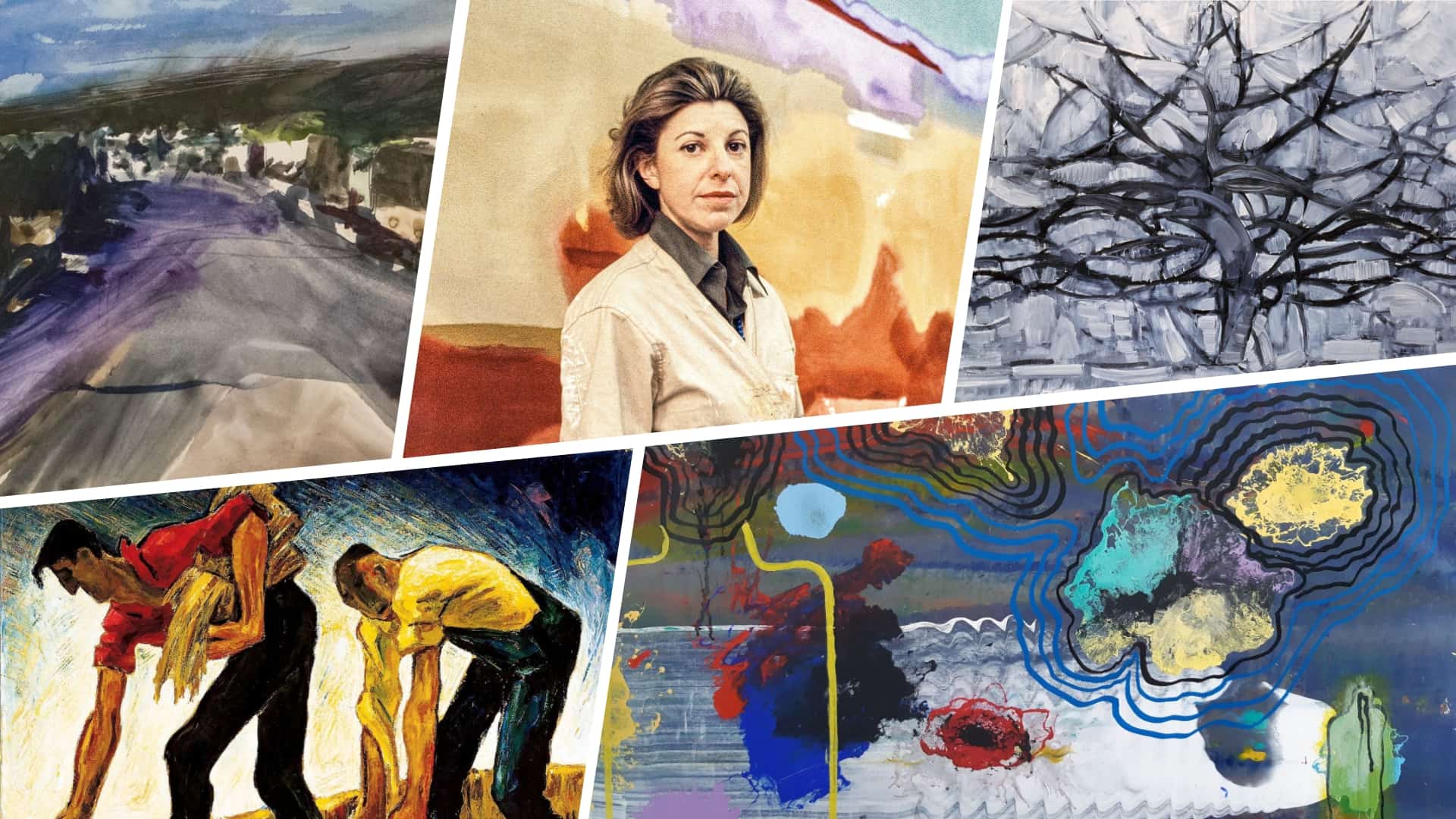Abstract art is perhaps one of the most popular styles that circulates in the fine art world. While its predominance is undeniable today, its emergence as a movement in the mid-twentieth century was simultaneously revolutionary and controversial. In this article, we’ll examine the history of abstract expressionism and how its emergence as a movement was forged by both history and current circumstances surrounding iconic artists.
What Is Abstract Expressionism In Art?
First, let’s define abstract expressionism
Abstraction exists throughout the modern art world today. But its roots are from the Abstract Expressionist movement.
Before we dive into the history of the movement, let’s take a look at the Abstract Expressionism definition to understand what distinguishes it from other art styles and movements.
ABSTRACT EXPRESSIONISM DEFINITION
What is Abstract Expressionism?
Abstract Expressionism is an artistic movement that emerged in the 1940s and 1950s that focuses on a shared curiosity in the utilization of abstraction as a means to express and/or elicit emotion through artistic works. In the post-World War II era, American painters primarily based in New York, sometimes referred to as the New York School, began using various techniques and demonstrating diverse styles to express their emotions and attitudes in a completely abstracted way. The effect and influence this movement has had in the decades since is substantial.
Iconic Abstract Expressionism artists
- Jackson Pollock
- Willem de Kooning
- Mark Rothko
- Clyfford Still
What Is Abstract Expressionism Influenced By?
History of Abstract Expressionism
In post-World War II America, citizens found themselves dealing with the aftermath. The impact the war had on the American psyche was apparent in soldiers coming home with severe PTSD. Families struggled to adjust from a war-time independence to regressive domesticity.
And youths sought an expressive outlet under the watchful eye of an increasingly paranoid American government.
Communist infiltration was an increasing fear among American politicians, especially Senator Joseph McCarthy of Wisconsin. In that paranoia, McCarthy led a charge of ‘witch-hunts’ against potential supporters of the Communist party. This fed directly into the film industry, creating what would be called the Hollywood Blacklist.
Senator McCarthy’s campaign against Communism
Related Posts
Many American artists had a desire to freely express the emotions and attitudes that the public was feeling. However, they simultaneously feared the consequences that might come from any interpretation of their work that might deem them a Communist sympathizer.
Abstract Expressionism art began to emerge as a vehicle that would allow the artists to pursue these desires. At the same time, it simultaneously protected them from any definitive and incriminating interpretation of their work.
Abstract Expressionism artists such as Jackson Pollock, Willem de Kooning, and Mark Rothko became trailblazers in the movement coming out of NY.
While the Abstract Expressionism movement itself emerged at this time, the origins of the style can be traced back further. One of the more influential art movements on Abstract Expressionism was in fact Surrealism.
Abstract Expressionists pulled from the Surrealists the idea that art is born out of the subconscious mind in a spontaneous manner.
Check out this video by Nerdwriter1 on how art evolved into abstract works like Pollock’s and the impact of past movements on Abstract Expressionism.
How Art Arrived At Jackson Pollock
Abstract Expressionists pulled concepts and techniques from artists before them in both curiosity for pushing the boundaries of art as well as a solution for limitations of art during their time.
Related Posts
Abstract Expressionism Artworks
Types of Abstract Expressionism
Abstract Expressionism artists utilized varying techniques to create their work. Within the movement, there were two broad types that emerged: gestural abstraction and color field.
Gestural abstraction
Gestural abstraction is painting through a physically spontaneous technique. This can be dripping, splattering, spraying, flicking, pouring or any other technique that spreads paint through space in a spontaneous, random way.
While gestural painting is still done with intention, it avoids premeditation. Most notable of these artists is Jackson Pollock who’s drip and splattering paintings have impacted art to this day.
Jackson Pollock Action Painting • Abstract Expressionism art
As you can see, Pollock’s intention behind his work is his choice of color (often determined by his mood) as well as the direction from which he drips and splatters paint. How it lands precisely on the canvas, however, is left to the random nature in which the gestures he creates causes paint to disperse.
Color field
The second broad lane of Abstract Expressionism art is color field. Color field painters focus more on the hues and colors of the paint they work with rather than the actual expression of them onto the canvas. Iconic color field painter Mark Rothko saw color as a means to elicit emotion.
While Rothko himself never deemed himself a color field painter, his balancing of large sections of washed color would say otherwise as critics correlated his work to the style.
Color field artworks' ability to acutely elicit emotion and feeling in a viewer really echo the sentiment of the Abstract Expressionist movement.
To narrow Abstract Expressionism to these two types of artistic styles would be incredibly reductive. While these two broad types were at the forefront of the movement, an incredible amount of techniques, styles, and methods evolved from these initial artists.
Our ability to trace Abstract Expressionism back to Surrealism is a direct parallel to what we see in the art world today. Modern artists take inspiration from many of these Abstract Expressionist artists who trail blazed the way.
UP NEXT
Explore More Styles and Movements
This was just one of many fascinating segments of art history. There are many eras, styles, artists, and movements to discover. Let's continue our study by choosing the next stop on your way to becoming an art aficionado. Below you can visit our Art Styles Index, our Art History Timeline, or choose an individual movement.
Showcase your vision with elegant shot lists and storyboards.
Create robust and customizable shot lists. Upload images to make storyboards and slideshows.
